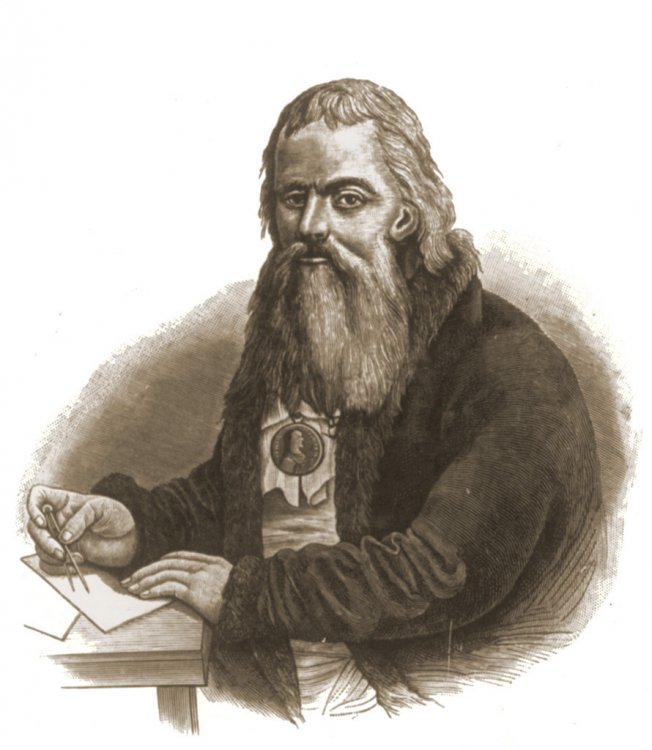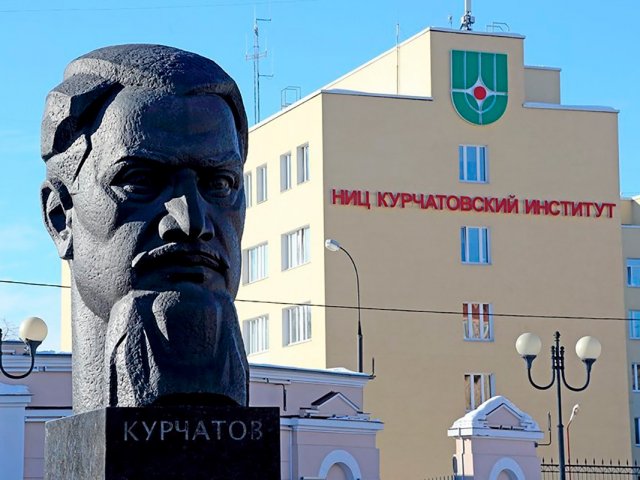Official:
Ivan Petrovich Kulibin. April 10 (21), 1735 – July 30 (August 11), 1818. Russian inventor, nicknamed “Archimedes of Nizhny Novgorod.”
Life and Work:
1. Not everyone is fated to have its surname turned into a generic name for something. Today you say “Kulibin,” and everyone understands that you mean a jack-of-all-trades, a smart, quick-witted, and inventive person.
2. The real Kulibin used to say this about himself, “All my thoughts are about inventing useful machines for the state and society.” There were plenty of such machines: a clock, an elevator, a steamboat prototype – water boat, a self-driving carriage, a microscope, a searchlight...
3. The writer Yuri Klarov told about the inventor’s birth in his historical detective novel. A Nizhny Novgorod merchant, Mikhail Kostromin, bought in St. Petersburg a clock that belonged to the evil magus, doctor and warlock Bomelius, who lived at Ivan the Terrible’s court. The clock with zodiac signs of the twelve celestial sphere constellations malfunctioned immediately after the purchase. And on the night of April 10 (Julian calendar), 1735, the the Nizhny Novgorod merchant’s family was awakened by a loud cock crowing – the clock came to life. Windows of the neighboring house, where the flour merchant Pyotr Kulibin lived, were lit – the merchant’s wife had delivered a child.
4. Ivan Petrovich Kulibin was actually born on April 21 (Gregorian calendar), 1735 in a merchant’s family in the village of Podnovye, Nizhny Novgorod district. He learned to read and write from a local lowly priest.
5. Kulibin learned mechanics on his own. Not everyone approved of his activities: his Nizhegorodskaya Street neighbors considered him a sorcerer and despised him. Educated and intelligent people, on the contrary, appreciated and respected the brilliant self-taught mechanic.
6. And the clock turned out to be prophetic: the merchant Kostromin played a decisive role in Kulibin’s life. When he heard that the self-taught inventor wanted to impress Empress Catherine the Great with an unusual clock, he supported his family for two years. Well, it was worth it: the famous “egg figure” clock, similar to a goose egg in size, concealed a clockwork theater consisting of four hundred and twenty-seven parts!
7. Kulibin and his sponsor Kostromin were welcomed at the royal court. It is remembered that when the famous Suvorov saw Kulibin at the other end of the hall, he quickly approached and made a low bow. Then the military leader took him by the hand, asked him about his health, and, addressing all the guests, said, “God have mercy, such a great mind! He will invent a flying carpet for us!”
8. Ivan Petrovich did not invent the flying carpet. But he tried to design a three-hundred-meter arch bridge over the Neva River. After the model of this bridge was successfully tested, Leonhard Euler congratulated Kulibin: “Now you have to build us a stairway to heaven.”
9. Surely, Kulibin did not build the stairway, but for thirty years he was in charge of the mechanical workshop of the St. Petersburg Academy of Sciences, where industrial machines, astronomical, physical, and navigation devices were produced under his supervision.
10. The famous lantern with a reflector, a mechanical leg (the first leg prosthesis), a self-lifting chair in the Winter Palace (the first elevator in Russia), machines for extracting salt – the list of all Ivan Pertovich’s technical inventions is almost endless. No wonder Empress Catherine awarded him a personalized gold medal with the inscription: “To the worthy. Academy of Sciences to the mechanic Ivan Kulibin.”
11. Then the worthy mechanic grew old and returned to his homeland, to Nizhny Novgorod. Here, towards the end of his seventh decade, he came up with a way to move ships upstream. The prototype proved that a ship can be moved faster than rowing vessels and faster than those pulled by barge haulers. But Kulibin’s vodohod did not enjoy any practical application.
12. Many other Ivan Petrovich’s inventions were ahead of their time and were not built. Among the ideas that were implemented and brought practical benefits, is the searchlight with a mirror parabolic reflector. Even with a weak source, it produced a powerful light, and therefore went into production: such searchlights illuminated workshops and used at lighthouses.
13. Ivan Kulibin died in extreme poverty: the father of twelve children spent all his savings on creating a perpetual motion machine. However, as you know, no inventor could possibly do it, because it is against the laws of physics.
14. Kulibin’s creations were ahead of progress, but in everyday life he was quite conservative. Ivan Petrovich did not smoke, did not drink alcohol, did not play cards, and wore a kaftan, Russian style.
15. In addition to the language, Kulibin’s surname left a mark in Russian literature. The self-taught watchmaker from Alexander Nikolaevich Ostrovsky’s play The Storm bears the name Kuligin – an unambiguous reference to the prototype.






















